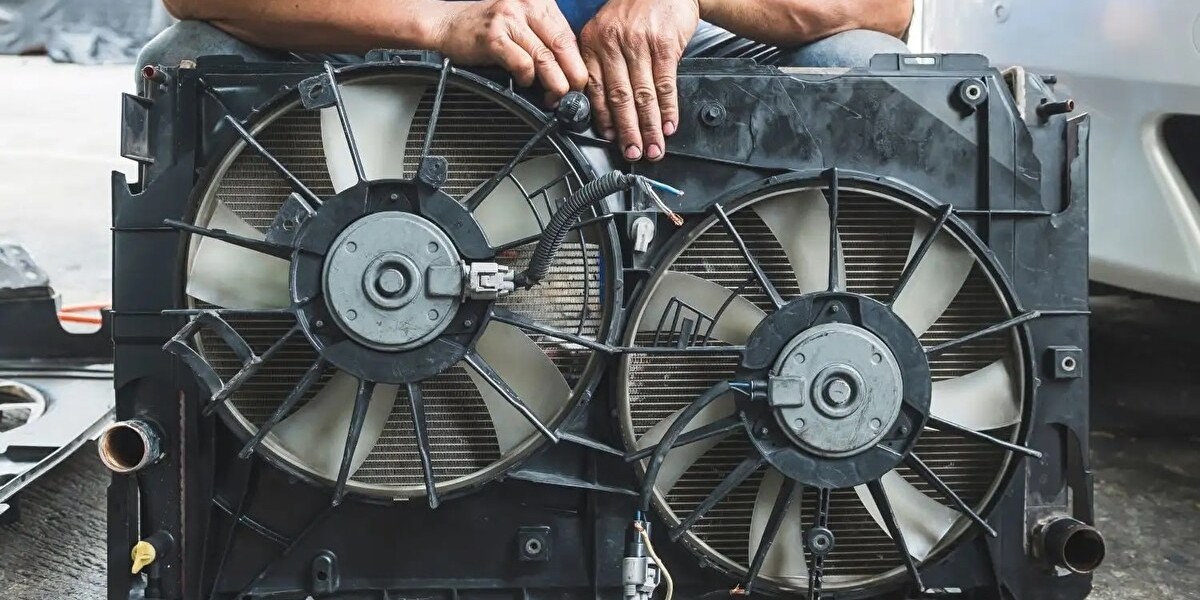Automotive Radiator Fan: Essential for Engine Cooling
Introduction
The automotive radiator fan is a crucial component of a vehicle's cooling system, designed to maintain optimal engine temperature and prevent overheating. It plays a vital role in ensuring that the engine operates efficiently and reliably. This article explores the function, types, components, and maintenance of automotive radiator fans.
Function of an Automotive Radiator Fan
1. Cooling the Engine
The primary function of the radiator fan is to draw air through the radiator when the vehicle is stationary or moving at low speeds. This airflow helps dissipate heat from the coolant circulating through the radiator, ensuring that the engine remains within its optimal temperature range.
2. Enhancing Airflow
When the vehicle is moving at higher speeds, natural airflow through the grille is usually sufficient to cool the radiator. However, during slow driving or idling, the radiator fan activates to enhance airflow, preventing the engine from overheating.
3. Supporting Air Conditioning
In many vehicles, the radiator fan also aids the air conditioning system by helping to cool the condenser, which is essential for efficient air conditioning performance.
Types of Automotive Radiator Fans
1. Mechanical Fans
Mechanical fans are directly connected to the engine via a fan belt. They operate based on engine speed; as the engine RPM increases, the fan speed increases. While reliable, mechanical fans can be less efficient because they continuously run, even when not needed.
2. Electric Fans
Electric fans are powered by the vehicle's electrical system and can be controlled by a thermostat. They only operate when necessary, providing better efficiency and reducing engine load. Electric fans can be further categorized into:
- Single Speed Fans: Operate at a constant speed when activated.
- Variable Speed Fans: Adjust their speed based on temperature, providing more precise cooling.
3. Dual Fans
Some vehicles use dual fans, typically one for the radiator and another for the air conditioning condenser. This setup enhances cooling efficiency, especially in high-performance applications.
Components of an Automotive Radiator Fan
1. Fan Blade
The fan blade is the primary component responsible for moving air through the radiator. The design and material of the blades can impact airflow and efficiency.
2. Motor
In electric fans, the motor powers the fan blades. The motor can be a simple DC motor or a more complex brushless motor, depending on the fan design.
3. Fan Shroud
The fan shroud is a housing that directs airflow through the radiator. It helps improve the efficiency of the fan by ensuring that most of the air pulled by the fan passes through the radiator.
4. Thermostat or Control Module
In electric fans, a thermostat or control module monitors the engine temperature and activates the fan when necessary. This component ensures that the fan operates only when needed, enhancing efficiency.
Signs of a Failing Radiator Fan
1. Overheating Engine
If the engine temperature gauge indicates overheating, it may be due to a malfunctioning radiator fan. This issue can lead to severe engine damage if not addressed promptly.
2. Increased Fuel Consumption
A failing fan can cause the engine to work harder to maintain optimal temperatures, leading to increased fuel consumption.
3. Unusual Noises
Strange noises, such as grinding or rattling sounds, can indicate a problem with the fan motor or damaged fan blades.
4. Fan Not Operating
If the radiator fan does not engage when the engine reaches a certain temperature, it may be a sign of a faulty thermostat, relay, or fan motor.
Maintenance Tips for Automotive Radiator Fans
1. Regular Inspections
Periodically inspect the radiator fan for signs of damage, such as cracked blades or loose connections. Ensure that the fan operates smoothly without unusual noises.
2. Check Electrical Connections
For electric fans, inspect the wiring and connections for signs of wear or corrosion. Ensure that the fan motor receives adequate power.
3. Cooling System Maintenance
Regularly check and maintain the cooling system, including the coolant levels and condition. A well-maintained cooling system reduces the strain on the radiator fan.
4. Replace Faulty Components Promptly
If you notice any signs of fan failure, address the issue immediately to prevent engine overheating and potential damage.
The automotive radiator fan is a vital component of the vehicle's cooling system, ensuring that the engine operates within its optimal temperature range. Understanding its function, types, components, and maintenance can help vehicle owners ensure reliable performance and prevent overheating issues. Regular inspections and prompt repairs are essential for maintaining the efficiency and longevity of the radiator fan and the overall cooling system.



